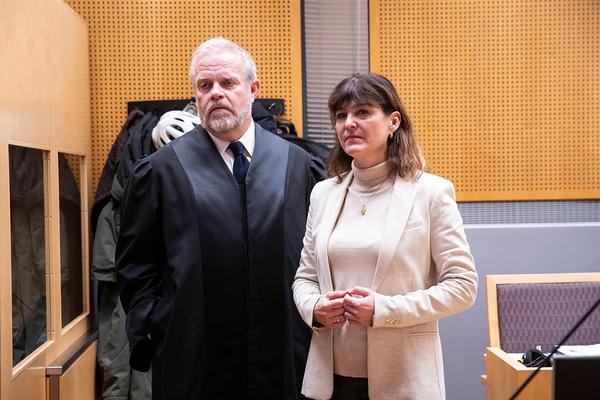27. mai 2015
A radical experiment with micropayments in journalism

In April 2014, we launched our pay-per-article startup Blendle in the Netherlands. The goal: to put all of the newspapers […]
In April 2014, we launched our pay-per-article startup Blendle in the Netherlands. The goal: to put all of the newspapers and magazines in the country behind one (quite sexy) paywall, and make it so easy to use that young people start to pay for journalism.
Back then, most newspapers and magazines in our tiny country assumed we wouldn’t survive very long. After so many failed attempts by publishers worldwide to make money online, many believed the only future for online journalism was clickbait and cat videos. Why would people pay for journalism when there is so much free stuff on the web?
But here we are. With more than 250,000 users – almost all of them in the Netherlands – of which the vast majority is under 35 years old, we’re proving that people will pay for great journalism (even though we like cat videos, too). And we are hoping that our second year will be an even crazier rollercoaster ride, with recently signed global licenses to sell The New York Times, The Wall Street Journal and The Washington Post, with many more to come.
The attention struggle
Why have people been unwilling to pay for great online journalism?
For publishers, it comes down to a struggle for attention. And because of that, many newspapers and magazines publish their best stories for free. Free stories get you a lot of traffic, and traffic can be monetized through advertising. But more and more publishers are realizing that they cannot build their business on this model.
Advertising revenue is declining sharply; the competition from Facebook and Google is very strong; 41% of the younger people are already using ad-blocking plugins; more kids are browsing in incognito mode, leaving no cookies at all; and native advertising makes both readers and journalists very uncomfortable.
As The Economist’s Tom Standage had said: ”The Economist has taken the view that advertising is nice, and we’ll certainly take money where we can get it, but we’re pretty much expecting it to go away. I have nothing against advertising as a source of revenue as part of the mix, but I’m kind of amazed that people are trying to do that.”
This is the reason that publishers all over the world are putting up paywalls, to diversify their income sources. Most end up with one of three models:
1. A metered paywall
Every month the newspaper gives away some articles for free. When your limit is reached, you have to pay up to continue. The New York Times has been doing this with reasonable success since 2011, and many publishers have aimed to follow. The thing is: while it may work for a huge newspaper in a huge market, it won’t for smaller papers in smaller markets. Only a small percentage of readers actually bump into the paywall, and few of those take out a subscription. You need tens of millions of visitors to make this worthwhile.
2. The freemium model
With this model, good stuff is available for free. But to see the really good stuff, you need a subscription. German newspaper Bild uses this ”plus model”: some articles are marked with a “Bild+”-logo, and you need to subscribe, in this case for 5 euros per month, if you want to read them.
3. The hard paywall
Every time you click a link, you’ll see something like this: Pay up now or leave! The best examples are the Financial Times and The Times in the United Kingdom. It works if you really, really want to read content from one of these (great) newspapers. Most people just leave the site after three seconds
Unbundling the news
The three models have one thing in common: they try to convince people to subscribe. This makes sense from the publisher’s perspective. If you have a lot of subscribers, for a publisher everything is awesome. However, online, most people no longer want to be forced into buying bundles.
They don’t want to subscribe. Many even hate paywalls.
They make us register again and again, at every newspaper or magazine we visit. And they make us pay monthly fees for websites with all sorts of stuff we don’t need.
Journalism needs a great user experience. So, we started thinking.
What if:
- You could read all the journalism you care for in one plac
- You would only need to register once to read all of it
- You would only pay for the articles you actually read
- You would get your money back if the story didn’t live up to your expectation
- No subscriptions
- No ads
That is exactly what we launched in The Netherlands one year ago. At the time, we pitched Blendle as “the iTunes of journalism”. But Blendle is not only about paying little if you don’t consume a lot. It is also about the convenience of reading and paying with only one click. It is about our focus on the very best user experience – the instant refund policy a good example. And it is about the way we help users to find the premium journalism that they find most interesting.
Over the past 12 months we have proven that, at least in the Netherlands, there’s a new market for publishers in addition to subscriptions, street sales and advertising. Without spending a single euro on marketing, we now have over a quarter million users. We generate a very decent amount of money (I can’t disclose how much, unfortunately, only that it’s more than Apple generates for publishers) in our short existence. But more importantly: the money comes from people who previously weren’t paying for journalism. My friends never paid for music and movies, until Spotify and Netflix came along. With Blendle, they’re paying for journalism, often for the first time in their lives.
Micropayments work
These are some of the lessons learned in the first year of our existence.
1. Micropayments for journalism can work.
But not for news. We don’t sell a lot of news in Blendle. People don’t want to spend money on something they can get for free elsewhere. People do spend money on background pieces. Great analysis. Opinion pieces. Long interviews. In other words: people don’t want to spend money on the ‘what’, they want to spend money on the ‘why’.
2. Our users punish clickbait by refunding.
In 2015, sometimes it feels like the best example of modern journalism is Buzzfeed. Go to any journalism conference, and their logo will be on many, many slides. As a journalist today, you could think it’s more valued to write clickbaity headlines than a well-researched piece of journalism. However, Buzzfeed doesn’t work when people pay per article. At Blendle we see this every day. Clickbait-heavy gossip magazines, for example, get much higher refund percentages than the average (some up to 50% of purchases). Readers will only pay for content they find worth their money.
So in Blendle, only quality journalism starts trending.
This way, micropayments could actually result in better journalism. As a publisher, you have to invest in incredible journalism to be able to sell them on a per-article basis. Thankfully, a lot of incredible journalism is produced every day.
3. Micropayments and refunds create a great metric for quality
For 20 years, publishers have been chasing pageviews, the metric that shows the number of times a web page is loaded. Here is what the CEO of analytics firm Chartbeat recently wrote about it: “The more pageviews a site gets, the more people are reading, the more successful the site. Or so we thought. Chartbeat looked at deep user behavior across 2 billion visits across the web over the course of a month and found that most people who click don’t read. In fact, a stunning 55% spent fewer than 15 seconds actively on a page.” This is why publishers have begun to look at engagement time rather than pageviews.
In The Netherlands, journalists now have access to two important extra metrics for their stories:
- How much revenue did the stories generate in micropayments?
- How many people asked for a refund after reading the stories?
If one goes up and one goes down, a publisher is doing great. (only 5% demand a refund.)
New money is good money
Micropayments is new revenue.
One year ago, some publishers in the Netherlands were worried: would the launch of Blendle result in cancelled subscriptions? Some even included questions about Blendle in their phone scripts when people called to cancel their subscription. Now we know for a fact that Blendle does not attract their current customers, but rather a new group that until now has never paid for journalism. And now that we have understood this, we can try to stay ahead of the curve for micropayments in journalism. We will work with publishers to integrate Blendle into their apps and websites.
Our second year will be about expanding internationally. We will soon know if Dutch people are just crazy, or if we’re really on to something with the micropayments model. Hopefully, it will grow to become a viable revenue model for journalism.
Alexander klöpping is the founder of Blendle, a pay-per-article startup in The Netherlands. He is a former columnist for Holland’s biggest youth newspaper and tech expert for Holland’s most popular TV talk show.
Text commisioned by the Tinius Trust. Also published on Medium.



